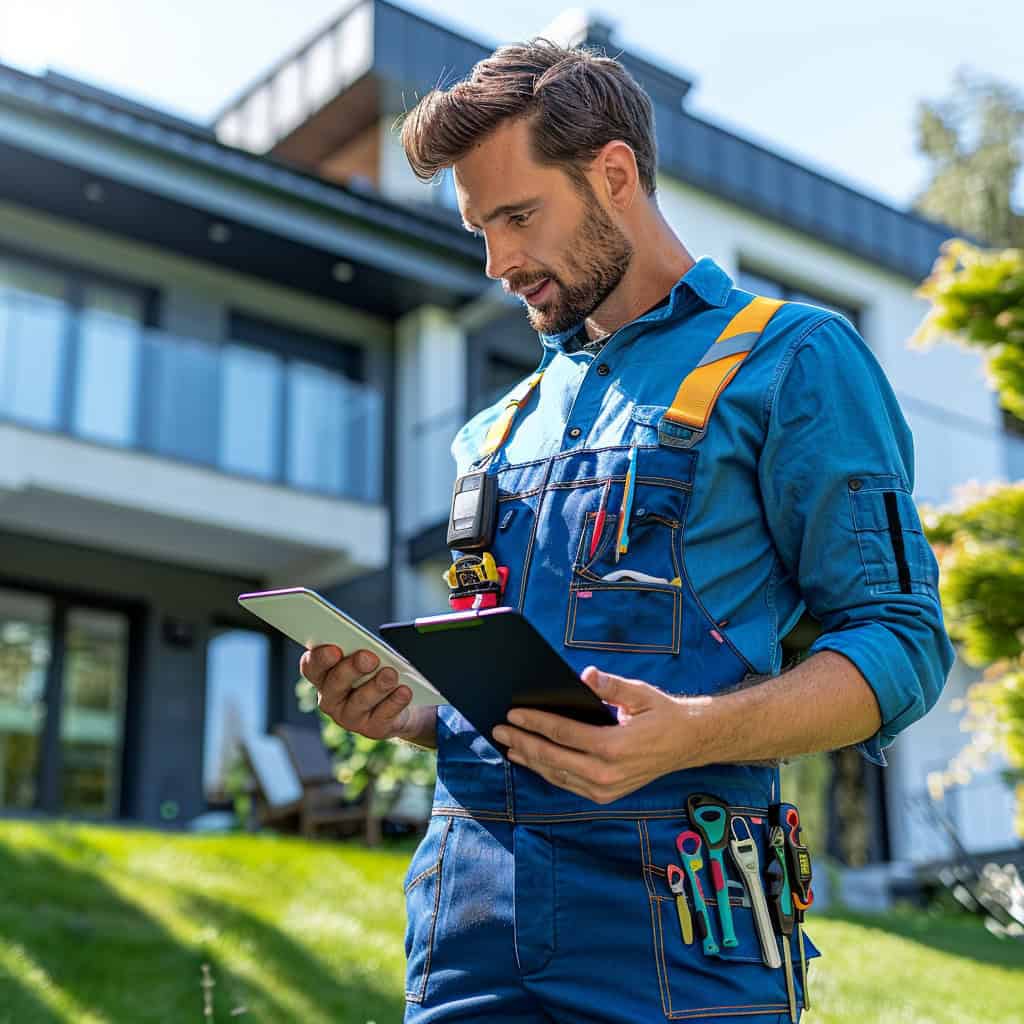The prospect of excavating a broken sewer line, installing a new one, and then dealing with the aftermath of the disruption is a daunting scenario for both plumbers and property owners alike.
Undergoing a water line replacement is never a minor inconvenience. It often means that your residence and landscape are disrupted for an extended period. However, trenchless water line replacement presents a less stressful alternative to the traditional method, sparing homeowners the anxiety and mess associated with conventional waterline replacement.
But what exactly is trenchless water line replacement? This innovative approach offers a solution that minimizes disruption and allows for access to difficult-to-reach areas, transforming the way water line replacements are conducted. Let’s explore the essentials of trenchless water line replacement and how it changes the game for homeowners and professionals in the plumbing industry.

Understanding Trenchless Pipe Repair and Replacement
Dealing with underground pipes usually means resorting to the conventional approach of trench excavation to access and rectify any issues. This traditional method often results in substantial landscaping costs and prolonged repair durations. However, the trenchless technique circumvents these drawbacks, offering a less intrusive and more efficient solution.
There are several methods of trenchless repair or replacement, each suitable for different scenarios. A skilled plumber can assess your specific situation to recommend the most appropriate technique. Each of these methods allows for the repair or replacement of a damaged water line directly from its endpoint, eliminating the need to excavate along the entire length of the pipe.
For example, the slip lining technique involves inserting a new, smaller pipe inside the existing one. Meanwhile, the pipe bursting method involves dragging a new pipe through the old one. As it progresses, the front of the new pipe breaks the old pipe apart, pushing it aside and laying down the new pipe in its place. This trenchless approach is gaining traction among homeowners due to its effectiveness and cost savings.
Exploring Trenchless Pipe Repair Techniques
Trenchless pipe repair and replacement are innovative processes that avoid the need for extensive excavation, operating entirely beneath the ground. To initiate the procedure, plumbers only need to create a minimal entry point at the beginning of the pipe. They then utilize a compact camera, guided through the pipe, to inspect and diagnose issues, allowing for strategic planning of the necessary repairs or replacements. Here are some trenchless repair methods that could be particularly beneficial:
Joint Sealing
Aimed at addressing leaks, joint sealing provides a durable repair solution. It’s particularly useful for issues like joint infiltration and the repair of pipe joints, including in applications like gas pipelines, drinking water systems, storage and distribution pipelines, storm drains, and pipelines in power generation. The technique employs a rubber seal, secured with stainless steel bands, to isolate and seal off leaks effectively.
Pipe Relining
For pipes with localized damage or leaks, pipe relining is a recommended method, suitable for both industrial and municipal repairs. Following a thorough inspection, specialists select the appropriate relining system, whether for potable water pipes or industrial use. The process involves inserting a liner into the existing pipe and inflating it to form a new pipe within the old one. This liner solidifies into a robust material within 24 hours, essentially creating a new pipe inside the existing structure.
Pipe Bursting
In cases where the water line is extensively damaged, plumbers might opt for the pipe bursting method. This technique employs a powered bursting head that travels inside the existing pipe, breaking it apart and clearing any obstructions like roots. A new pipe, attached to the bursting head, is then laid in place as the head advances, ensuring a seamless replacement of the old pipe with minimal disturbance to the surrounding area.
Advantages of Opting for Trenchless Water Line Replacement
Swift and Hassle-Free
Trenchless water line replacement stands out for its speed and convenience, especially when contrasted with traditional methods. This approach eliminates the need for obtaining various permits, upheaving daily life, or temporarily relocating. Traditional methods can drag on for days or weeks, whereas trenchless replacement can be completed in under a day, significantly reducing downtime.
This method leverages advanced technologies like sewer cameras for precise diagnostics, pinpointing the exact location of damage. Then, using the cured-in-place pipe (CIPP) technique, plumbers can repair the pipeline internally without needing to excavate. This method is not only effective for water but also for chemical and gas lines, where an epoxy liner is applied to the inside of the damaged pipe, forming a new, sturdy pipe within.
The duration of the CIPP process varies with the size of the plumbing system, ranging from a couple of hours to longer for extensive networks. Always verify with your plumber if they offer domestic water line relining services.
Minimizes Property Disruption
Trenchless repair significantly reduces property damage by eliminating extensive excavation. Plumbers use cutting-edge equipment to access the water lines through minimal entry points, leaving landscapes intact. Initial inspections are performed with sewer cameras, which are fed into the lines to capture detailed footage, identifying issues without the need to dig up your yard.
Besides locating major damages, sewer camera inspections can reveal smaller leaks or issues that might have gone unnoticed, pinpointing the exact areas needing attention without extensive digging.
Improves Water Quality
For homes with lead pipes, trenchless replacement offers a safer alternative, eliminating the risk of lead contamination. This method ensures cleaner, better-tasting water by replacing old lead pipes with modern, non-lead materials. It also reduces contamination risks by limiting exposure during the repair process, as new pipes are installed with minimal disturbance to the ground.
Accesses Difficult Areas
Trenchless technology excels in repairing or replacing pipes in hard-to-reach areas, such as those under buildings, where traditional methods would be impractical and costly. Techniques like pipe bursting allow for the efficient replacement of underground lines without significant excavation, improving accessibility and reducing labor.
Cost-Effective
Trenchless replacement is generally more affordable than traditional methods due to reduced labor and equipment needs. The process saves money on landscaping restoration and property repairs, offering a quicker, more efficient solution that also cuts down on labor costs.
Prevents Tree Root Intrusion
The epoxy linings used in trenchless repairs deter tree roots from penetrating water lines, addressing one of the common causes of pipeline damage. This long-term solution reduces the need for frequent sewer line cleanings and maintenance.
Durable and Environmentally Friendly
Trenchless pipes are designed for longevity, offering improved water flow and resistance to common issues like leaks and corrosion. These environmentally friendly solutions minimize landscape disruption and utilize recycled materials, contributing to a greener repair process.
Safe
Trenchless methods are safer, avoiding the risks associated with digging deep trenches. By choosing experienced plumbers skilled in trenchless techniques, homeowners can enjoy a worry-free repair with minimal risk to property and personal safety.
In summary, trenchless water line replacement offers a compelling array of benefits, from quick and less disruptive repairs to improved safety and environmental impact, making it a preferred choice for many homeowners.

